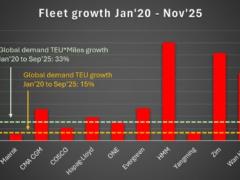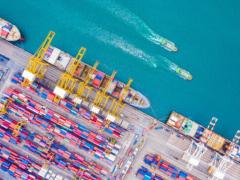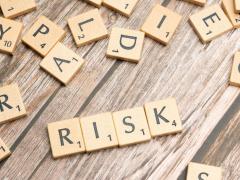South Africa has the highest criminal markets score in southern Africa according to the 2025 Africa Organised Crime Index, with ports and bonded warehouses identified as primary enablers of drug trafficking, counterfeit goods and arms smuggling.
The index, published by the Global Initiative against Transnational Organized Crime, ranks South Africa first out of 13 southern African countries for criminal markets. Its criminal actors score stands at 7.7 (out of ten) while resilience measures score 5.67 – the highest resilience ranking in the region.
A higher criminal markets score indicates that a country hosts a greater number of severe, pervasive and impactful illicit markets, while the criminal actors score measures the presence, reach and influence of different types of criminals operating in or from a country.
These range from mafia-style groups and criminal networks to state-embedded actors such as public officials, foreign actors and private sector actors, including legitimate businesses, such as lawyers and logistics firms, that facilitate organised crime.
The resilience score measures a country’s ability to withstand, adapt to and recover from organised crime. A higher score indicates stronger resilience.
Durban and Cape Town ports are highlighted as critical hubs for organised crime in the country.
“Ports such as Durban are key entry points for drug trafficking and counterfeit goods, with large-scale cocaine seizures at major ports, such as Durban, highlighting the country’s role in transnational drug trafficking. Corruption at ports and bonded warehouses facilitates the entry of illicit goods, while state-embedded actors within law enforcement and customs services enable the smooth operation of criminal markets,” the report notes.
Strong transnational ties to suppliers in Southeast Asia, Latin America and Eastern Europe are noted.
“The heroin trade is a key component of drug markets in South Africa, which is a transit point and a destination hub. Heroin enters through Mozambique and Tanzania, originating from Afghanistan, and is distributed through violent street-level networks. Durban and Cape Town are significant heroin trafficking and consumption hubs,” it adds.
“The crisis, which disproportionately affects the most disadvantaged communities, affects a significant share of the adult population, making South Africa’s heroin market one of the largest on the continent."
It notes that cocaine trafficking is prevalent, with South Africa acting as a key transit point for shipments moving from South America to international markets in Europe, Asia and Australia.
“Domestic consumption, while stable, is overshadowed by synthetic stimulant use. Large-scale cocaine seizures at major ports, such as Durban, highlight the country’s role in transnational drug trafficking,” the report points out.
South Africa is also a primary destination and transit hub for counterfeit products, which enter mainly through the ports. Johannesburg serves as a major distribution hub, with round-tripping schemes – goods ostensibly for neighbours like Zimbabwe re-entering illegally – enabled by weak enforcement.
"Illicit trade in excise goods, particularly tobacco and alcohol, is significant. Corruption among border control officials, especially at ports, enables the continued flow of contraband. Despite government efforts to combat this market, including the deployment of the Border Management Authority, illicit trade networks remain well established,” the report found.
Arms trafficking is fuelled by a combination of domestic and international sources.
“Firearms are smuggled into the country from neighbouring states, including Mozambique, Zimbabwe, Namibia and Lesotho. However, a significant portion of illicit firearms originates from legal domestic markets as weapons are stolen from civilians, private security firms and law enforcement agencies,” the report noted.
It highlighted that state-embedded criminal actors posed a significant challenge in South Africa – the country scored 8 on the index – where corruption permeates various levels of governance.
“The legacy of state capture and systemic graft has left many state institutions vulnerable to criminal infiltration. Political corruption is particularly pronounced at municipal level, where criminal actors have embedded themselves in local government structures to influence state contracts and financial flows,” it added.
“Politically motivated assassinations have become a persistent feature of the criminal landscape and targeted killings are often used to secure political and economic interests.”













